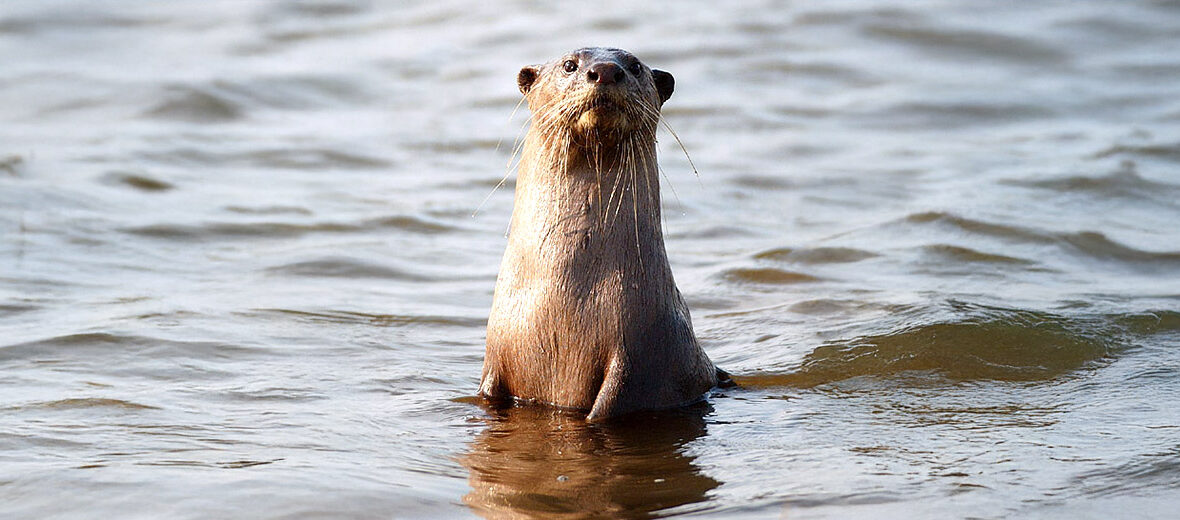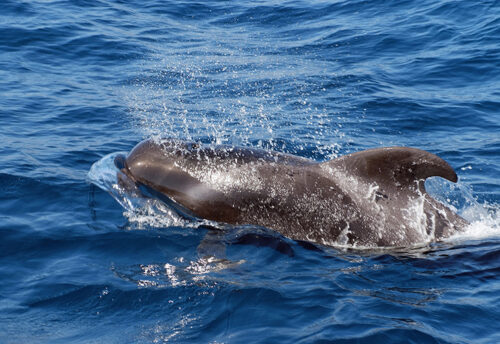
The smooth-coated otter has, as you can tell from its namesake, very smooth fur that is actually shorter than other otter species. They hail from southern and southeastern Asia. These otters prefer large rivers, lakes, wetlands, and mangrove swamps, typically requiring good bankside vegetation for shelter, resting, and denning. Unfortunately, these critters face many threats such as habitat loss and destruction at the hands of residential and commercial developments, farming, marine and freshwater aquaculture, logging, dams, and water management practices; hunting; trapping; roads and railroads, that divide their territory and can result in vehicle strike (being hit by vehicles); overfishing; water pollution; land pollution; and climate change, that can cause droughts, storms, and flooding. The IUCN lists these otters as Vulnerable. Their populations are also continually decreasing.
First the Stats…
Scientific name: Lutrogale perspicillata
Weight: Up to 24 lbs.
Length: Up to 25 inches, plus up to a 17 inch tail
Lifespan: Up to 20 years
Now on to the Facts!
1.) They were first described by Isidore Geoffroy Saint-Hilaire in 1826.
2.) Even though these are the only living species in the monotypic genus Lutrogale, 3 regional subspecies are currently recognized: L. p. perspicillata, L. p. sindica, and L. p. maxwelli.
3.) These critters, together with the Asian small-clawed otter and the African clawless otter, form a sister clade to the genus Lutra.
4.) Smooth-coated otters and Asian small-clawed otters genetically diverged about 78 million years ago, during the Cretaceous Period of the Mesozoic Era.
5.) They communicate via body language and vocally via chirps, wails, and whistles.
But wait, there’s more on the smooth-coated otter!
6.) Their diet consists primarily of various species of larger fish (up to 12 inches in length). However, they will also prey on rats, mice, snakes, frogs, and insects.
7.) Females undergo up to a 63 day gestation (pregnancy) that yields up to 7 pups; with up to 5 being the normal amount.
Did you know…?
Collective or group hunting tactics have been observed in this species. They form a V-line and force the fish to panic. They then grab the fish and throw them up on shore and swallow them whole, head first.
8.) Pups are born altricial (blind and helpless) and weaned in up to 5 months.
9.) In January 2013, 6 juvenile smooth-coated otters were discovered in a bag left at Bangkok International Airport. This was the first instance of smooth-coated otters believed to have been destined for the illegal pet trade.
10.) These otters have been listed on CITES Appendix II since 1977.
Now a Short Smooth-Coated Otter Video!
Be sure to share & comment below! Also, check out the Critter Science YouTube channel. Videos added regularly!

Want to suggest a critter for me to write about? Let me know here.
Some source material acquired from: Wikipedia & IUCN
Photo credit: Yathin S. Krishnappa



